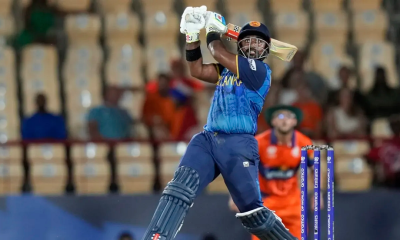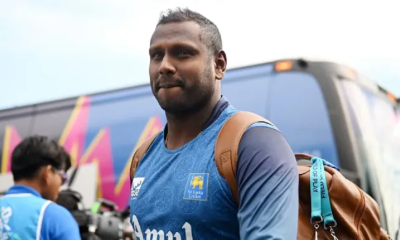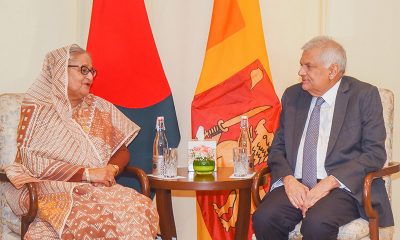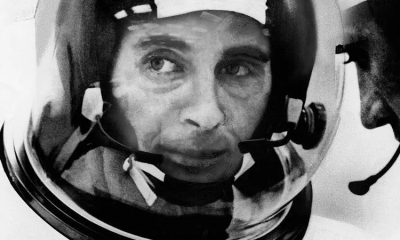News
NASA reveals why you’ll lose weight in Sri Lanka

Weight gain is a common complaint of holidaymakers. According to Nasa choosing a different destination could make a difference in how much you weigh.Scientists have recently discovered the reason why travellers to Sri Lanka are lighter, whereas you’ll gain weight in Turkey. It’s not the baklava.
Since the 1960s Nasa has known that gravity does not affect the globe evenly, with ‘anomalies’ in the weight of objects travelling from one location to another.Though those hoping to shed might be disappointed.
A traveller weighing 68kg in New Zealand could lose up to 3g when in the Maldives or Canada’s Hudson Bay, where there are areas of lower relative-gravity. The difference is not massive, around 1/25,000 of your bodyweight, but it’s a start.
What it does tell us is that the makeup of the planet is very different under foot, affecting the weight and gravitational force on the surface.Satellites from Nasa’s GRACE mission (Gravity Recovery and Climate Experiment) have been mapping the differences for years. While ocean measuring stations have suggested there is a difference the use of satellite imaging to measure water density has allowed Nasa to build high definition of gravity.
The lowest gravity on the planet is found at the southern tip of Sri Lanka and parts of the Indian Ocean east of the Maldives. North Canada around the Hudson Bay area is also an area of low gravity.The difference is thought to be down to the thickness of the Earth’s crust and the volume of molten rock and magma, beneath the surface.
“The Canadian anomaly has been known for a long time,” said Dan Britt, director of the Center for Lunar and Asteroid Surface Science. The physicist from the University of Florida told the Daily Mail, it is now thought that the changes came about during the last Ice Age when enormous glaciers pressed down on the Earth’s surface.
He described it like squishing a jam sandwich, the thick ice sheets deformed the crust, pushing the fluid to the edges.
“A couple of miles of ice is heavy enough to depress the crust,” said Britt.
Elsewhere ‘heavy’ spots can be explained by currents in molten rock, or magma, and convection currents in superheated bubbling lava.
The strongest gravity earth is located around Bolivia and the northern Andes, where relative gravity represents around 50 additional milligals. Here you’ll be around 1/19613th heavier than at 1 standard gravity.
Objects are also slightly heavier around the poles and around the fault lines of the Pacific. There is an area of increased weight at the top of New Zealand’s North Island following the Kermadec Trench.
The distribution of gravity is slowly changing as the fluid magma redistributes and continental plates shift. Since the launch of the GRACE and GRACE-FO (follow on) satellites in 2018, Nasa has been mapping the slow change, by measuring surface water.
Measuring “the amount of water in large lakes and rivers, as well as changes in sea level and ocean currents provides an integrated global view of how Earth’s water cycle and energy balance are evolving”, says the Nasa GRACE mission.
Rather than helping weight watchers plan their holidays, there are bigger implications of gravitational anomalies on surface water which compound climate changes.(New Zealand Herald)
Latest News
PM underscores the outstanding universal value of Anuradhapura’s Living Heritage at International Expert Conference in Paris
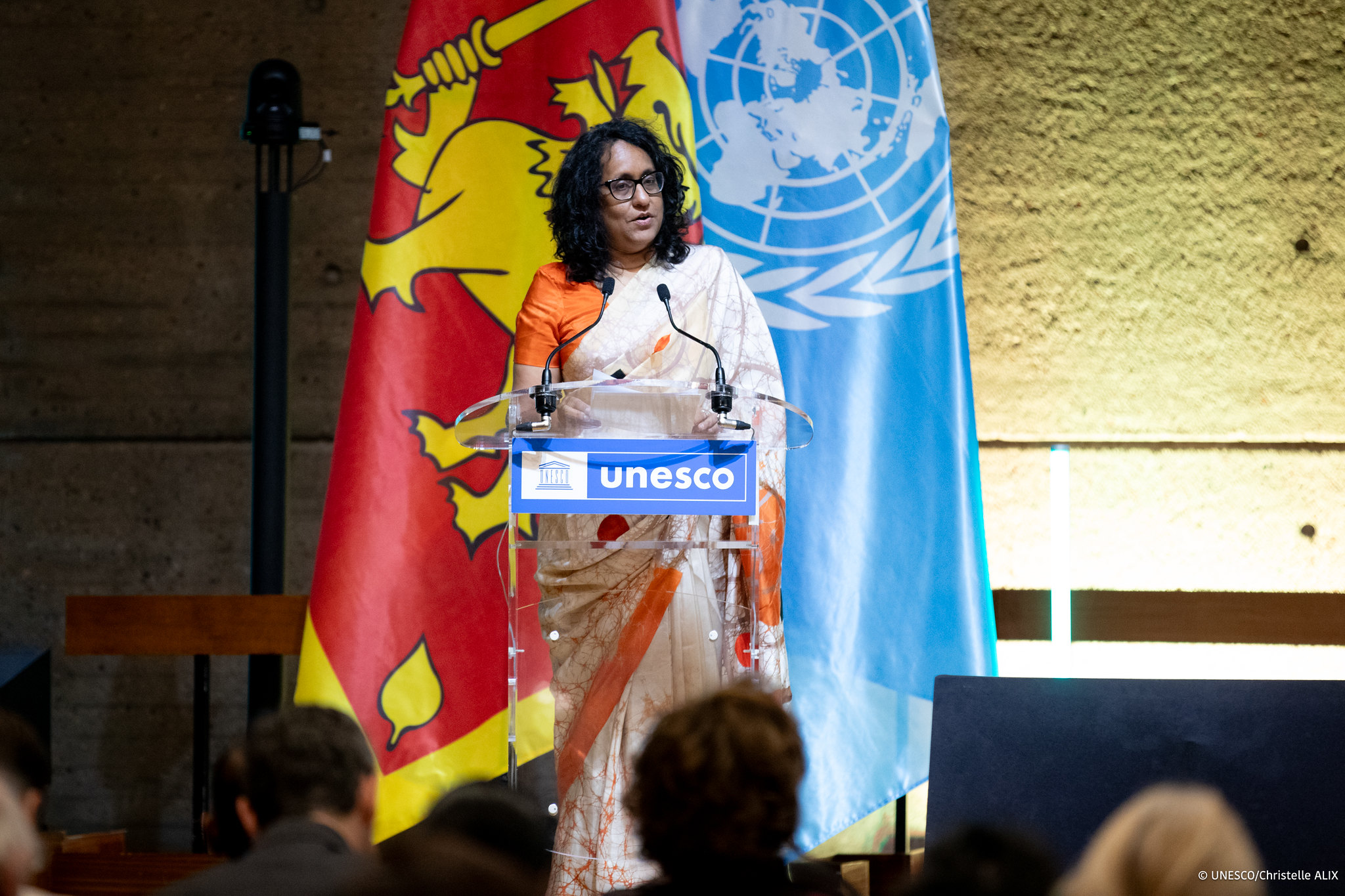
Prime Minister Dr. Harini Amarasuriya who is on an official visit to France from 31 March to 2 April 2025, participated in the high-level segment of the International Expert Conference on “An Integrated and Sustainable Approach to Safeguarding the World Heritage Property of the Sacred City of Anuradhapura in Sri Lanka and Associated Living Heritage”, held at UNESCO Headquarters in Paris on Tuesday 1 April 2025.
The International Conference was organized by UNESCO in partnership with the Government of Sri Lanka to showcase the universal significance of the Sacred City of Anuradhapura and its associated living heritage, and to garner international cooperation for its conservation and sustainable development.
Inaugurating the Conference, Director-General of UNESCO Audrey Azoulay warmly welcomed Prime Minister Amarasuriya to UNESCO, while recalling her own memorable visit to Sri Lanka in July 2024 where she had the valued opportunity to witness firsthand the “exceptional heritage” of the Sacred City of Anuradhapura, which she described as “a spiritual hub, a royal capital of over a 1,000 years, and the birthplace of Theravada Buddhism.” Referring to the inscription of Anuradhapura in the world heritage list in 1982, she underscored the importance of global solidarity and international cooperation in safeguarding this extraordinary world heritage for posterity, and the intent of the Conference to explore further means of its conservation and sustainable development through international cooperation. In concluding her address, the Director-General recalled the words of renowned Sri Lankan archaeologist and former President of ICOMOS International Dr. Roland Silva, that Anuradhapura continues to be “a modern wonder of the world.’
Addressing the high-level segment, Dr. Harini Amarasuriya outlined Sri Lanka’s national vision to preserve the global heritage of the Sacred City of Anuradhapura for education, pilgrimage and heritage tourism, while ensuring the maintenance of a careful balance between conservation, sustainable development, and the needs of local communities. The Prime Minster also extended her deep appreciation to Director-General Azoulay for her vision and leadership which was instrumental in convening this International Conference dedicated to Anuradhapura.
Striking a personal note, the Prime Minister reminisced about her childhood and youthful memories of this heritage city, where she felt “the magic of Anuradhapura, the sense of awe at the creativity and skills of our ancestors.” She described Anuradhapura as “a unique mix of the ’sacred’ (activities belonging to the spiritual realm) and the ’profane’ (relating to the everyday and the material realm),” while also highlighting the advanced architectural and hydraulic expertise of this ancient civilization, whose origins can be traced back to 900 BCE.
Referring to UNESCO’s institutional mandate, the Prime Minister commended the organization—led by the Director-General, the secretariat, and its member states—for its invaluable contributions to advancing global discussions on education reform, mainstreaming cultural recognition, and harnessing knowledge and innovation for global peace and sustainable development amid complex geopolitical challenges.
Delivering the keynote address, the Minister of Buddhasasana, Religious and Cultural Affairs Dr. Hiniduma Sunil Senevi presented the integrated management plan of the Government of Sri Lanka towards the sustainable and integrated management of the Sacred City of Anuradhapura. He reiterated the Sri Lanka Government’s commitment to preserving the Outstanding Universal Value of the heritage site through inclusive, sustainable development. He further urged the international community to join hands with Sri Lanka in safeguarding this shared heritage for future generations, and to ensuring that its benefits reach local communities.
The Conference brought together internationally recognized experts, senior officials of government, development partners, heritage professionals and the diplomatic corps in exploring innovative and sustainable approaches to integrated site management. The key themes discussed comprised the integration of tangible and intangible heritage, capacity building, strengthened community participation, the application of digital tools in conservation, sustainable tourism aligned with World Heritage guidelines, and the critical importance of international partnerships and resource mobilization for long-term preservation of this heritage site.
The Prime Minister had a meeting with Director-General Azoulay on the sidelines of the Expert Conference where thematic areas of cooperation were discussed. The Prime Minister highlighted Sri Lanka’s interest in enhancing UNESCO’s presence in the country through suitable programmes, and apprised the Director-General on progress in Sri Lanka’s Category II South Asia Centre for Teacher Development (SACTD), Sri Lanka’s engagement in the programme of work of UNESCO, Sri Lanka’s educational reforms and areas of synergy with UNESCO, as well as the country’s commitment to the annual celebration of Vesak in UNESCO, among other matters. The Director-General reiterated UNESCO’s continued commitment to supporting Sri Lanka’s multifaceted collaboration with the international body.
At a reception hosted by the Ambassador and Permanent Delegation of Sri Lanka to UNESCO, the Prime Minister underscored the importance of Sri Lanka’s 75-year partnership with UNESCO, and reaffirmed the country’s commitment to further strengthening this collaboration in key areas of cooperation. She did so in her capacity as the Minister of Education, Chairperson of the Sri Lanka National Commission for UNESCO, and Chairperson of the Central Cultural Fund.
The Prime Minister also formally handed over to the Director-General, Sri Lanka’s Instrument of Accession to the 2005 UNESCO Convention on the Protection and Promotion of the Diversity of Cultural Expressions, demonstrating the country’s commitment to promoting cultural diversity, artistic freedom, and international collaboration. Ambassadors and Permanent Delegates accredited to UNESCO, senior representation of the UNESCO Secretariat including Director and team of the World Heritage Centre, the President of the France – Sri Lanka Friendship Group in the French National Assembly, expert participants of the Conference, academics, scholars and senior officials of the French Ministry for Europe and Foreign Affairs attended the reception and conveyed their warm greetings and felicitations to the Prime Minister.
The delegation of the Prime Minister comprised the Minister of Buddhasasana Religious and Cultural Affairs Dr. Hiniduma Sunil Senevi; the Director General, Central Cultural Fund Dr. Nilan Cooray and the Director General, Department of Archaeology Prof. Thusitha Mendis. The Prime Minster was assisted by the Ambassador and Permanent Delegate of Sri Lanka to UNESCO Manisha Gunasekera and senior staff of the Embassy and the Permanent Delegation of Sri Lanka to UNESCO.
[Prime Minister’s Media Division]
Latest News
Deshabandu Tennakoon further remanded until April 10

The Matara Magistrate’s Court has ordered that former Inspector General of Police (IGP) Deshabandu Tennakoon be further remanded until April 10.
The former IGP has been held in remand custody after he surrendered to the Matara Magistrates court on 19th March 2025.
Latest News
President appoints committee to submit recommendations to the Government on the new US tariff system

President Anura Kumara Disanayake appointed a committee to conduct an in-depth study on potential issues that may arise due to the new reciprocal tariff system introduced by US President Donald Trump and to submit recommendations to the government.
Accordingly, the committee includes the Secretary to the Ministry of Finance, the Governor of the Central Bank, the Chairman of the Board of Investment of Sri Lanka, the Chairman of the Sri Lanka Export Development Board and the Director General of Economic Affairs at the Ministry of Foreign Affairs.
Additionally, Senior Economic Advisor to the President Duminda Hulugamuwa, Chief Economic Policy Advisor to the Ceylon Chamber of Commerce Shiran Fernando, as well as Ashroff Omar, Sherad Amalean and Saif Jafferjee have also been appointed to the committee.
-

 Sports5 days ago
Sports5 days agoSri Lanka’s eternal search for the elusive all-rounder
-

 News4 days ago
News4 days agoBid to include genocide allegation against Sri Lanka in Canada’s school curriculum thwarted
-

 News6 days ago
News6 days agoGnanasara Thera urged to reveal masterminds behind Easter Sunday terror attacks
-

 Sports22 hours ago
Sports22 hours agoTo play or not to play is Richmond’s decision
-

 Business7 days ago
Business7 days agoAIA Higher Education Scholarships Programme celebrating 30-year journey
-

 News5 days ago
News5 days agoComBank crowned Global Finance Best SME Bank in Sri Lanka for 3rd successive year
-

 Features5 days ago
Features5 days agoSanctions by The Unpunished
-

 Features5 days ago
Features5 days agoMore parliamentary giants I was privileged to know


